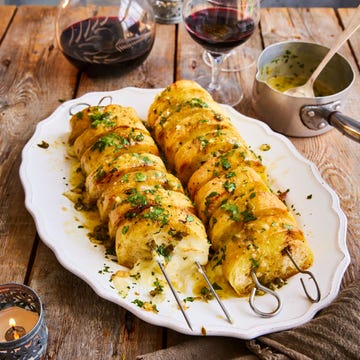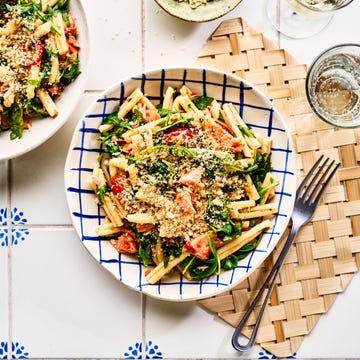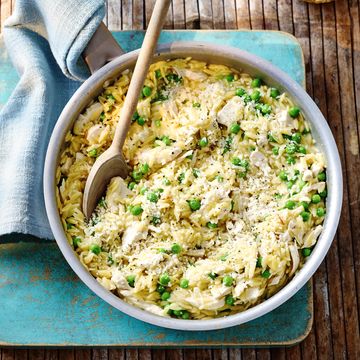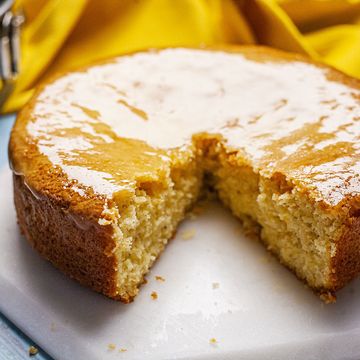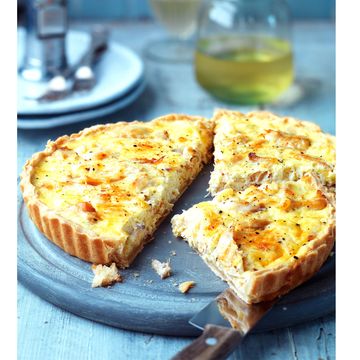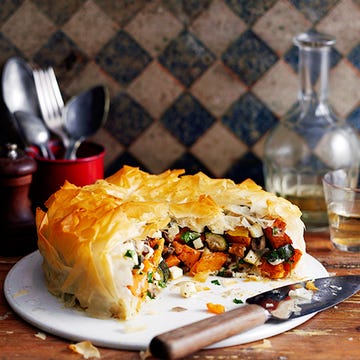Runner beans are one of the easiest vegetables to grow, but they don’t last long and are best eaten within 3 days of picking. Not great if you can't get through the glut OR you've been away from home. So here's why you need to freeze them.
Their high water content means that they freeze well, so if you have a glut of runner beans during the summer, prepare and freeze them ready to use all year round for a vibrant green addition to your dishes and add with other easy to freeze vegetables (you can freeze carrots, courgettes, cauliflower and more).
How to freeze runner beans
Runner beans need to be partly cooked (blanched) before freezing, this will help to retain their fresh flavour, texture and green colour once they have defrosted, as well as help to preserve their nutrients. To prepare the runner beans, wash them in cold running water, drain and dry well.
Chop off the tough stalks and remove the fibrous strings by running a vegetable peeler down the sides of each bean. You can also buy a handy gadget to slice the string off, if you're looking to save some time. Slice the runner beans into ribbons or 1-2cm thick pieces, so they are ready to cook from frozen.
How to blanch runner beans?
To blanch the runner beans, cook in boiling water for 2-3 minutes (depending on their size), remove from the heat and drain, then plunge into a bowl of ice cold water (the cold water is important to help preserve the green colour and prevent the beans cooking any further).
Drain again, dry thoroughly with kitchen paper, then lay the blanched beans in a single layer on a baking tray lined with parchment paper. Put the freezer on its coldest setting and freeze until solid, then tip the frozen beans into an airtight freezer bag or container to store. Open freezing the beans at the beginning ensures they don’t freeze in clumps, making it easy to cook only what you need straight from the freezer.
The beans should be stored in an airtight freezer bag or container, labelled with the date they are frozen, for up to 6 months.
How are runner beans affected by freezing?
For best results, freeze the runner beans as fresh as possible and avoid freezing large fibrous beans. If properly prepared and stored, runner beans will revert to being vibrant and tender once defrosted. If storing for longer than 6 months, the beans will deteriorate in taste and texture but are still useable.
How to use frozen runner beans?
There is no need to defrost the runner beans before cooking, they can be added straight to a pan of boiling water and cooked for 3-5 minutes, until tender. Alternatively add them straight from the freezer into your recipe, being mindful that they have been blanched prior to freezing so may need less cooking time. If you wish to defrost the runner beans first, put the frozen runner beans in a colander and run them under cool water for a few minutes, moving them about frequently, until defrosted. They should be used immediately after defrosting.
What to cook with runner beans?
Frozen runner beans can add beautiful vibrancy and freshness to many dishes, such as curry, pasta, risottos and salad. They can be used in place of green beans in recipes such as this nutritious Green Bean and Pork Szechuan Stir-Fry making sure to reduce the cooking time slightly as the runner beans have been blanched. Try substituting the peas with frozen runner beans in this warming vegetable risotto. Or replace some of the broccoli or cauliflower with frozen runner beans to add some crunch and a pop of colour to this indulgent macaroni cheese.
An experienced and highly skilled team of food writers, stylists and digital content producers, the Good Housekeeping Cookery Team is a close-knit squad of food obsessives. Cookery Editor Emma Franklin is our resident chilli obsessive and barbecue expert, who spends an inordinate amount of time on holidays poking round the local supermarkets seeking out new and exciting foods. Senior Cookery Writer Alice Shields is a former pastry chef and baking fanatic who loves making bread and would have peanut butter with everything if she could. Her favourite carb is pasta, and our vibrant green spaghetti is her weeknight go-to. Lover of all things savoury, Senior Cookery Writer Grace Evans can be found eating crispy corn and nocellara olives at every opportunity, and will take the cheeseboard over dessert any time (though she cannot resist a slice of tres leches cake). With a wealth of professional kitchen know-how, culinary training and years of experience between them, they are all dedicated to ensuring every Good Housekeeping recipe is the best it can be, so you can trust they’ll work (and if they don’t – we’ll have the answer for why*) every time (*90% of the time the answer is: “buy an separate oven thermometer”!).


